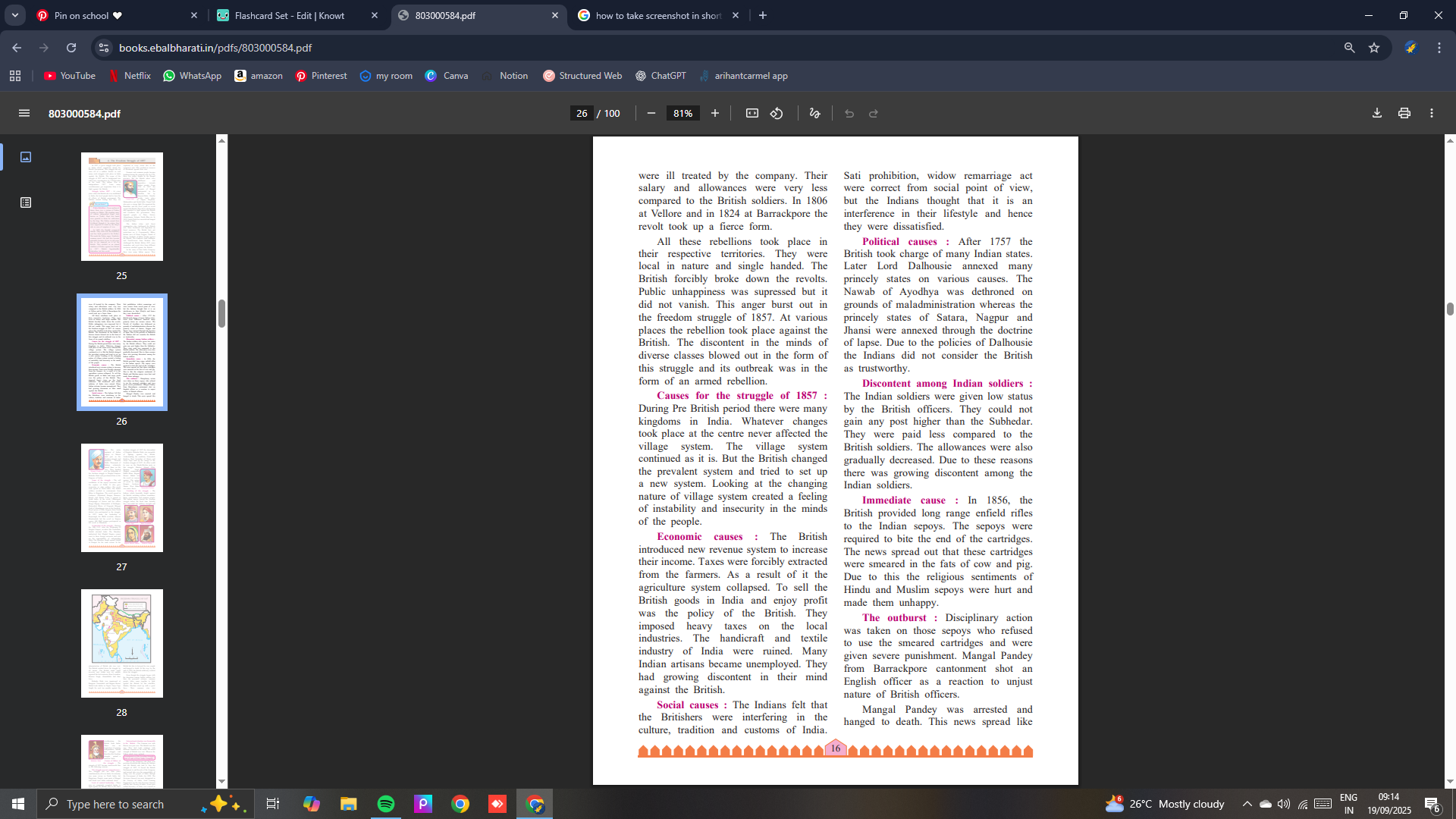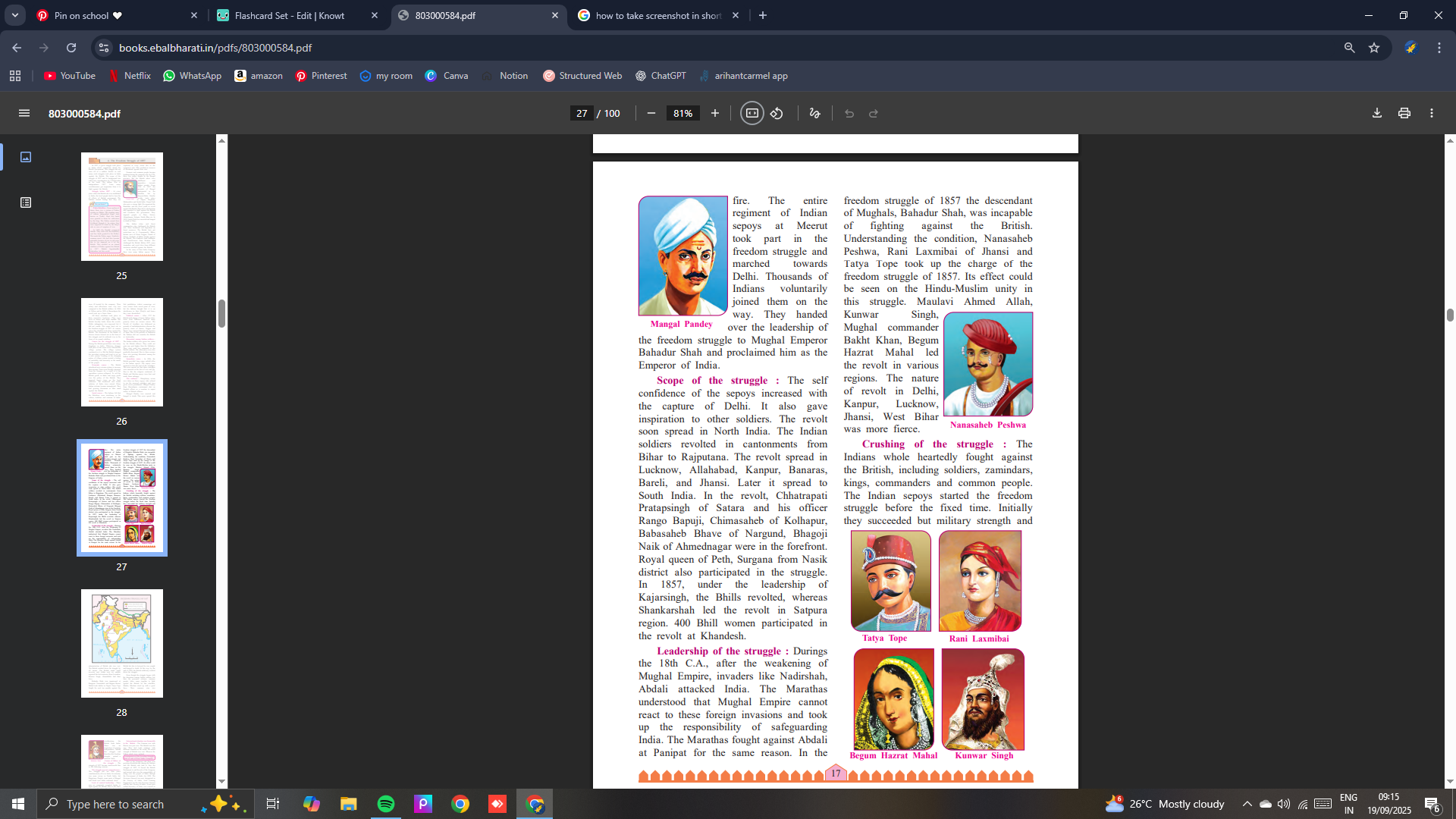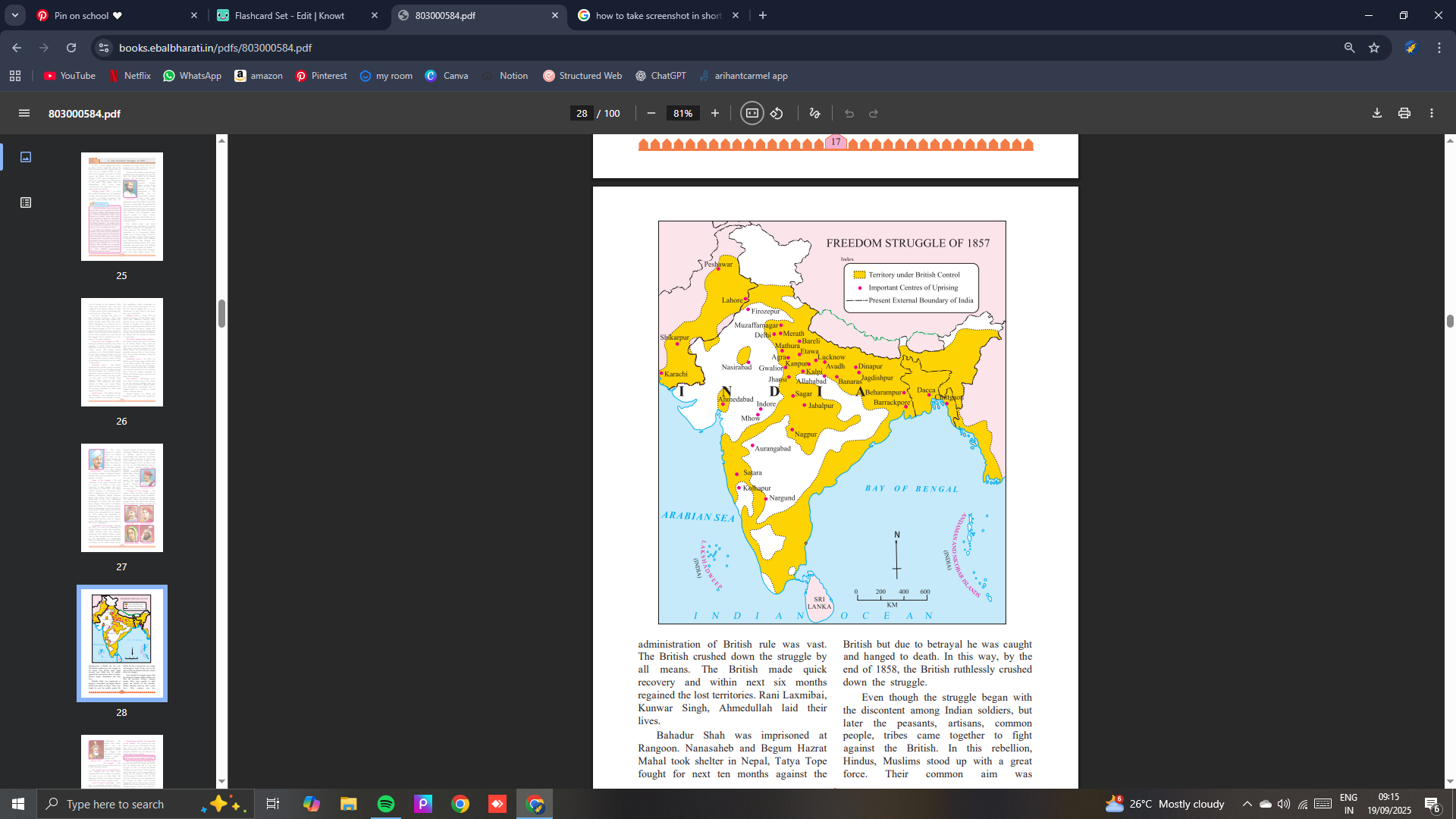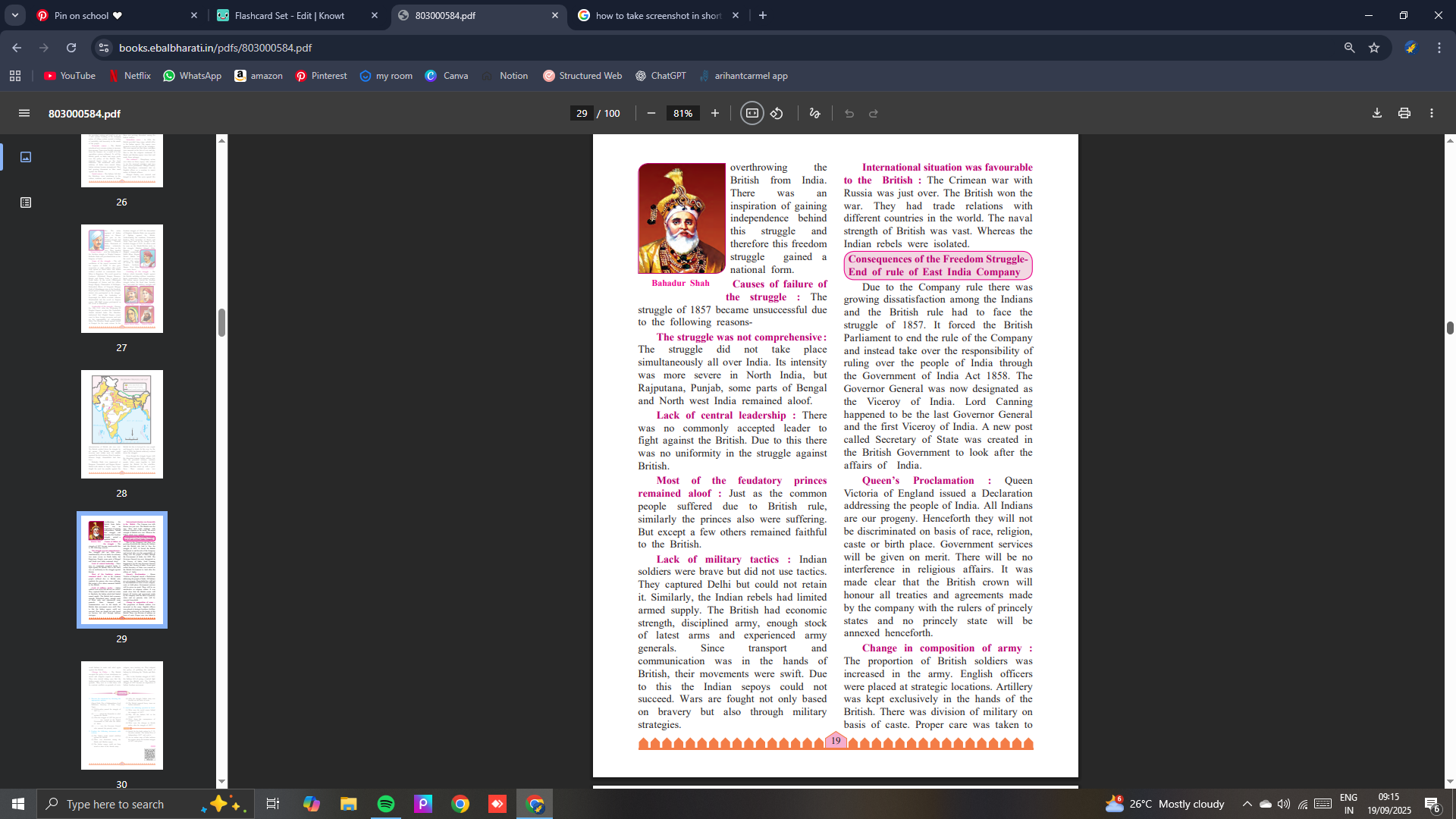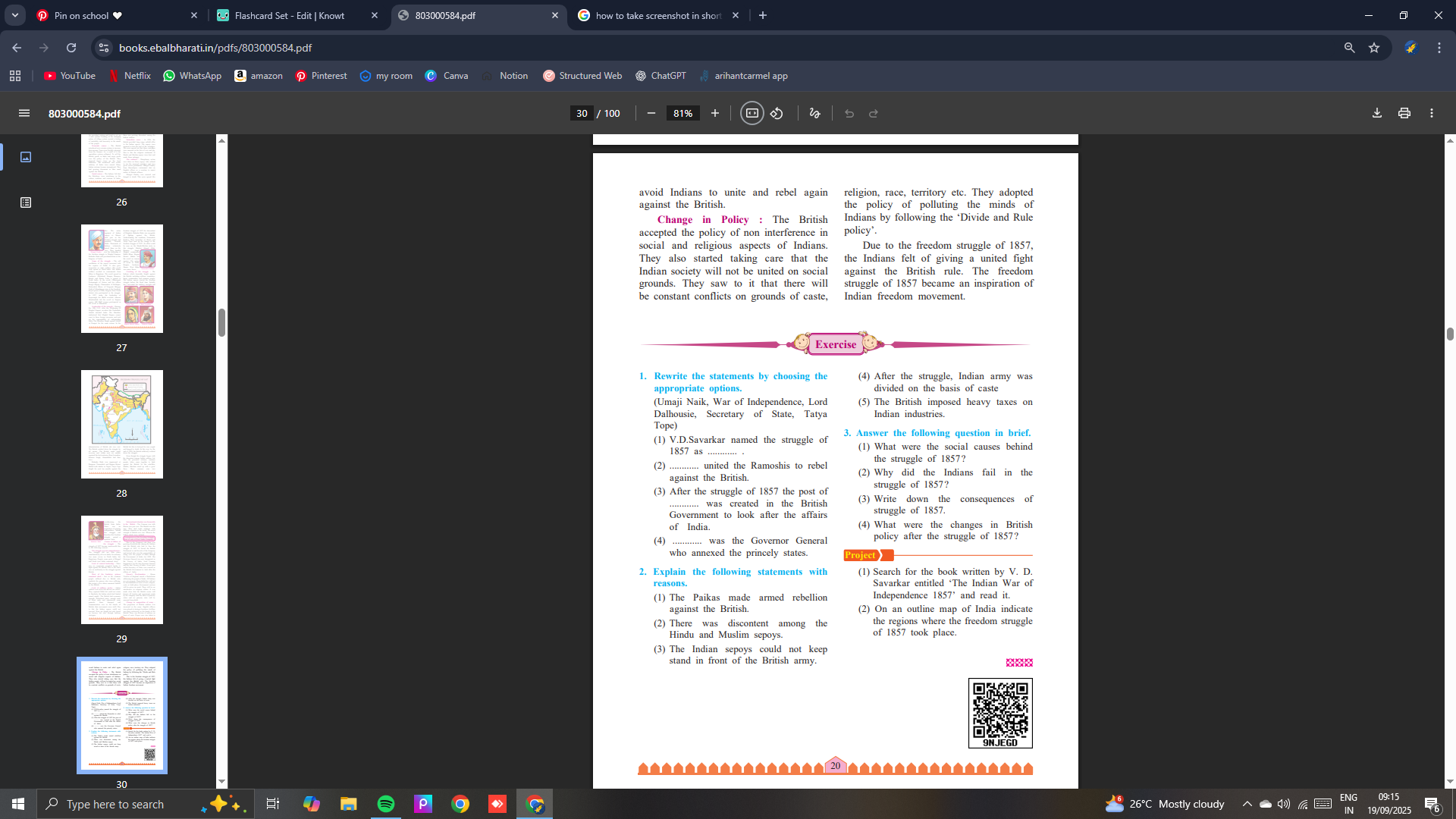history chapter 4
1/5
Earn XP
Description and Tags
Name | Mastery | Learn | Test | Matching | Spaced |
|---|
No study sessions yet.
6 Terms
In 1857, a great struggle took place in India which completely shook the British Government. This struggle did not arise all of a sudden. Earlier as well many such struggles took place in India against the British. The scope of the struggle of 1857 and its background was taken into consideration by V.D.Savarkar in his book ‘The Indian War of Independence 1857’. Later many revolutionaries got inspiration from it to fight against the British. Struggle before 1857 : At every place where the British rule was established in India, the local people had to bear the ill effects of British government. The Indians started feeling that they are exploited in every strata due to the company's rule. This resulted in increase of discontent against their rule. Farmers and common people became bankrupt during the company rule. In 1770, there was major famine in the Bengal province. But the British rulers were indifferent and insensitive towards Indian people. From 1763 to 1857 the peasants of Bengal participated in the rebellion led by Sanyasi-Fakir. Similar revolts took place in Gujrat, Rajastan, Maharashtra and South India. Umaji Naik also gave a strong fight. He organised the Ramoshis and the local youth to revolt against the British. They drew a declaration and appealed to fight against the British and overthrow the government. They inspired people in Pune, Satara, Ahmednagar, Solapur, Nasik, Bhor etc. In 1832, Umaji Naik was arrested and hanged to death in Pune. The Indian tribes and forest communities also challenged the British rule. Their livelihood was dependent on forest resources. The British laws put restrictions on it. Consequently, Bihar, Kolam area of Chota Nagpur, Gonds of Orissa, Santhals of Bihar fought against the British. The Gadkaris from Kolhapur and Fond-Sawant from Konkan also challenged the British. Before 1857, some zamindars and royal class from different territories rebelled against the British. In the army of East India Company there were many Indian sepoys. They Paika Rebellion : From mediaeval times, there was a system of Paikas existing in Odisha. The standing army of various independent kings were known as ‘Paika’. Rent free lands were granted to them for cultivation by the king. The Paikas earned their livelihood through it. In return, they were supposed to stand by the king’s side in case of eruption of war. In 1803, the English conquered Odisha. They took over the hereditary rent free lands granted to the Paikas. This made the Paikas angry. Similarly, common man’s life had also become miserable because of rise in salt price due to tax imposed on it by the British. This resulted in an armed rebellion of Paikas against the British in 1817. Bakshi Jaganbandhu Bidyadhar led this revolt. 4. The Freedom Struggle of 1857 Umaji Naik Do you know? 16 Sati prohibition, widow remarriage act were correct from social point of view, but the Indians thought that it is an interference in their lifestyle and hence they were dissatisfied. Political causes : After 1757 the British took charge of many Indian states. Later Lord Dalhousie annexed many princely states on various causes. The Nawab of Ayodhya was dethroned on grounds of maladministration whereas the princely states of Satara, Nagpur and Jhansi were annexed through the doctrine of lapse. Due to the policies of Dalhousie the Indians did not consider the British as trustworthy. Discontent among Indian soldiers : The Indian soldiers were given low status by the British officers. They could not gain any post higher than the Subhedar. They were paid less compared to the British soldiers. The allowances were also gradually decreased. Due to these reasons there was growing discontent among the Indian soldiers. Immediate cause : In 1856, the British provided long range enfield rifles to the Indian sepoys. The sepoys were required to bite the end of the cartridges. The news spread out that these cartridges were smeared in the fats of cow and pig. Due to this the religious sentiments of Hindu and Muslim sepoys were hurt and made them unhappy. The outburst : Disciplinary action was taken on those sepoys who refused to use the smeared cartridges and were given severe punishment. Mangal Pandey from Barrackpore cantonment shot an English officer as a reaction to unjust nature of British officers. Mangal Pandey was arrested and hanged to death. This news spread like were
